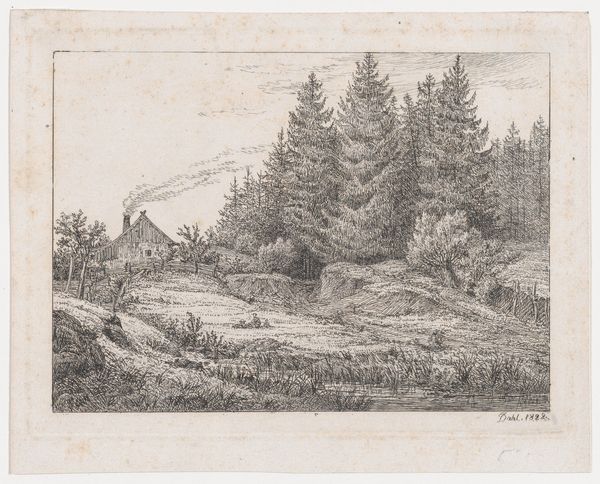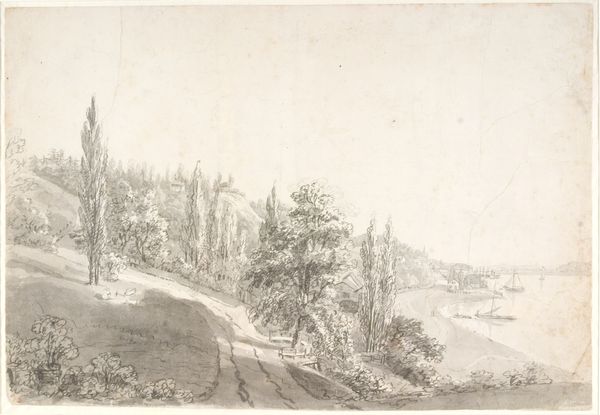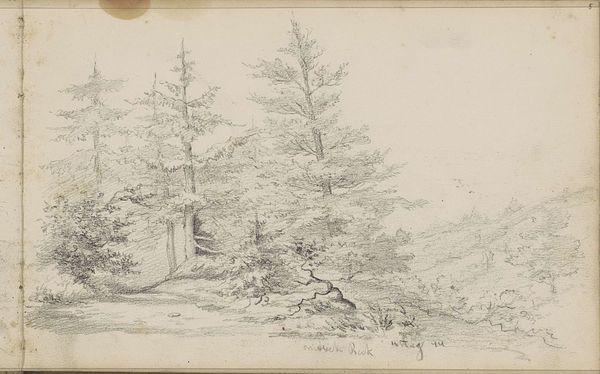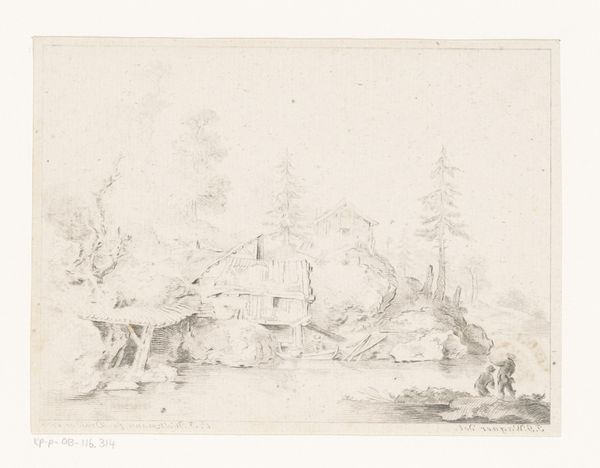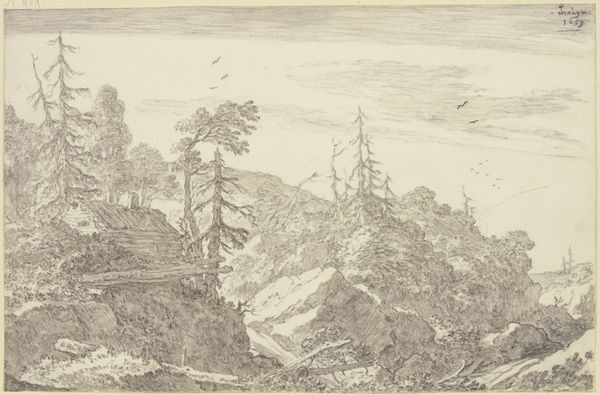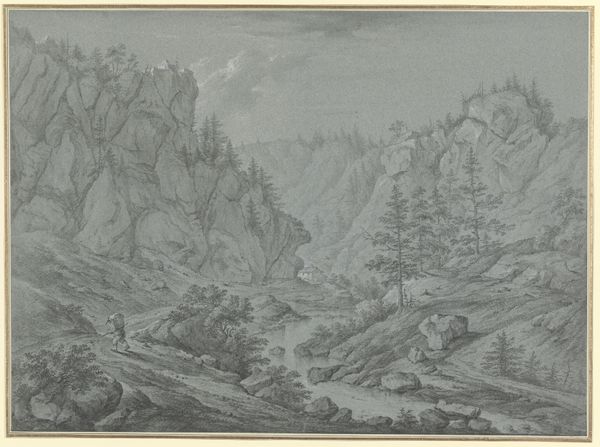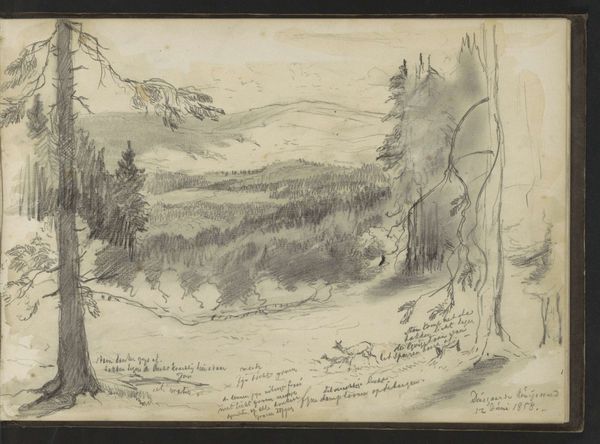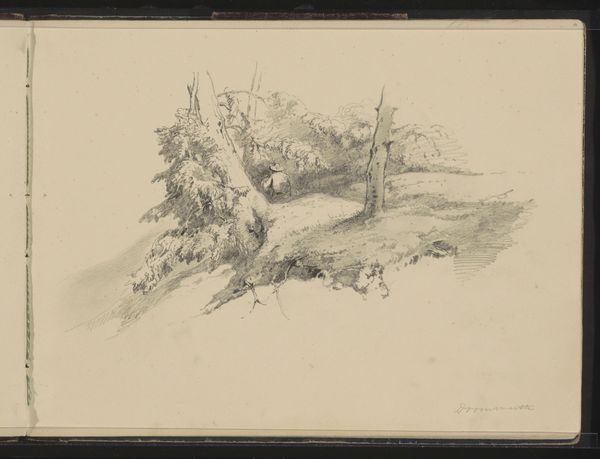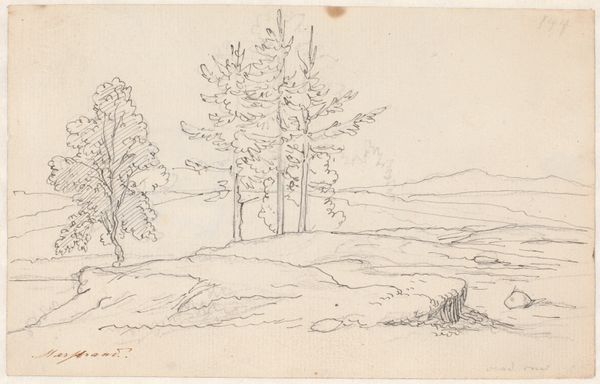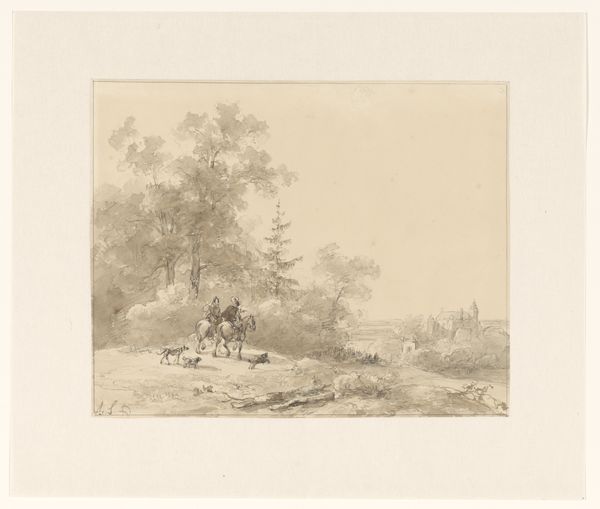
Dimensions: 232 mm (height) x 334 mm (width) (bladmaal)
Editor: This drawing, "Norsk bjerglandskab med kvæg og to mænd," or "Norwegian Mountain Landscape with Cattle and Two Men," created by Erik Pauelsen in 1788, is rendered in pencil. It evokes such a feeling of solitude, almost like a stage set, doesn’t it? What strikes you most about it? Curator: I'm drawn to the way this apparently tranquil scene subtly engages with ideas of land ownership and national identity. The romantic landscape often masked a more complex power dynamic. How does the artist, through his representation of figures and cattle in this seemingly ‘untouched’ nature, participate in or challenge that power structure? Editor: That’s a compelling way to look at it! I was seeing the figures as small and insignificant in comparison to nature's grandeur. Are you suggesting that their very presence stakes a claim? Curator: Precisely! Think about the historical context. Pauelsen was working at a time when ideas of nationhood and cultural identity were being intensely debated. His portrayal, on the one hand, appears to celebrate the pastoral, but simultaneously it insinuates labor and control – consider the act of 'owning' a view through representation. Also, what narrative does this pastoral idyll create, especially for those who are displaced or whose labor enables it? Editor: So it's not just a pretty landscape. There’s an underlying commentary on belonging and possibly even exclusion embedded in the image? Curator: Exactly. Landscape art isn't passive; it's an active participant in shaping how we perceive ourselves and our relationship to the world. Who benefits from this version of "Norway," and who is left out of the frame? What's particularly intriguing is Pauelsen’s conscious manipulation, seemingly placing more importance to composition and beauty above real people. Editor: I hadn’t considered it that way before. Looking at it now, I see the tension between the romantic ideal and the potential implications for those actually living and working in that landscape. Curator: It’s a valuable reminder that art, even seemingly innocuous landscape drawing like this, is always entangled in larger social and political realities.
Comments
No comments
Be the first to comment and join the conversation on the ultimate creative platform.

